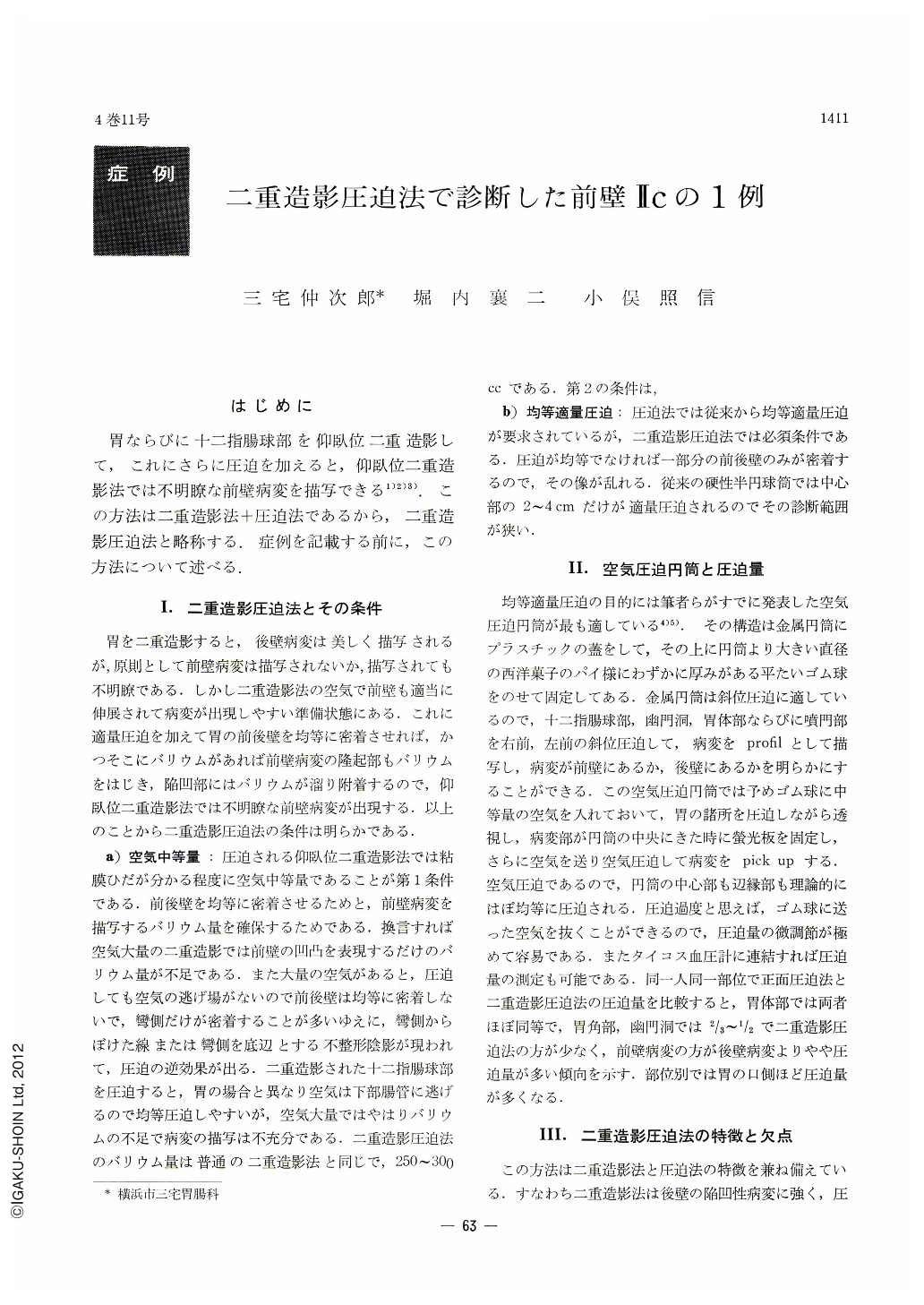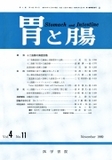Japanese
English
- 有料閲覧
- Abstract 文献概要
- 1ページ目 Look Inside
はじめに
胃ならびに十二指腸球部を仰臥位二重造影して,これにさらに圧迫を加えると,仰臥位二重造影法では不明瞭な前壁病変を描写できる1)2)3).この方法は二重造影法+圧迫法であるから,二重造影圧迫法と略称する.症例を記載する前に,この方法について述べる.
When comression is applied to the stomach and the duodenal bulb in the course of double contrast study in the supine position, lesions on the anterior wall can be delineated which are indistinct in the usual double contrast method. Requisites for this method are: (a) the amount of air in the stomach should be moderate so that mucosal folds are to be recognized; and (b) the compression must be proportioned and evenly applied. For this purpose, it is most convenient to use air-compression tube contrived by the authors. It is a tube with a flat rubber balloon fixed to its top. Frontal compression by it enables the examiner to pick up not only lesions on the posterior wall but on the anterior wall as well. As it is compression by air, it can be applied evenly and proportionately. Because it is a tube, oblique compression such as right forward or left forward can also be applied. Oblique compression of such regions as the duodenal bulb, pyloric antrum, corpus and the cardia becomes easy, so that any lesion in these parts can be delineated as a profile and location of both walls can be ascertained. By frontal compression with this tube anthors were able to pick up an oblong Ⅱc type early cancer, measuring 12 by 24 mm, on the anterior wall of the pyloric antrum in a woman 53 years of age. One of the features of this method is, despite its easy application the abillity to delineate a chief lesion as closely as possible to a gross specimen. On the other hand, as is unavoidable in the compression method, mucosal folds around a lesion are superimposed on one another in such a way as to make interpretation very hard. If compression is applied to a careless double contrast study, the whole aspects of the lesion on the posterior wall may become distinct.

Copyright © 1969, Igaku-Shoin Ltd. All rights reserved.


